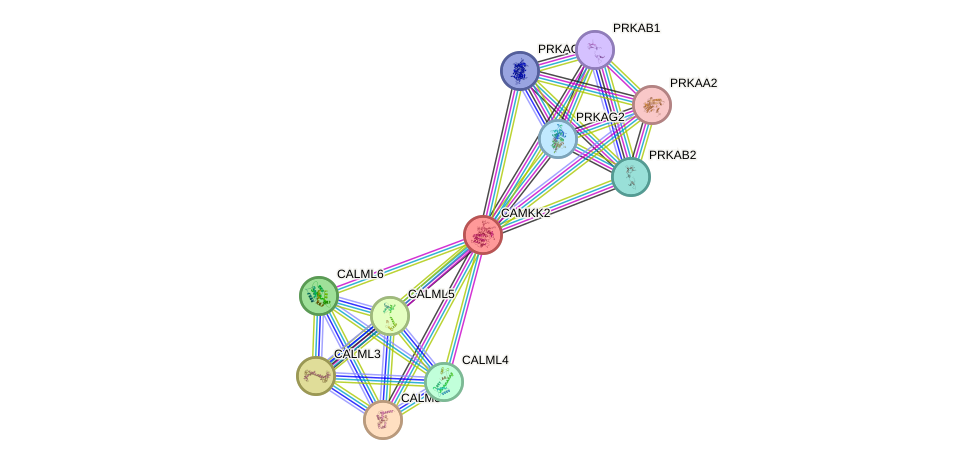Introduction
A recent comprehensive review, featured in the esteemed journal Molecular Psychiatry, delves into the intricate world of bipolar disorder, shedding light on the calcium-calmodulin-dependent protein kinase kinase-2 (CaMKK2) signaling pathway. This pathway, previously shrouded in mystery, is now emerging as a crucial player in both the genesis of bipolar disorder and its potential as a prime target for innovative treatments. By honing in on the protein-coding enzyme, CaMKK2, which is intricately woven into various neuronal and metabolic processes, researchers aim to chart new avenues for addressing this complex mental health condition.
Current Approaches to Bipolar Disorder Treatment
Bipolar disorder, a condition characterized by debilitating episodes of mania, depression, or a tumultuous combination of both, affects at least one in every 100 individuals. Its repercussions extend beyond the emotional realm, encompassing cognitive and functional impairments, heightened susceptibility to metabolic and cardiovascular diseases, and reduced life expectancy. Regrettably, the current arsenal of treatments for bipolar disorder remains far from optimal. Conventional medications like lithium and valproate, while commonly prescribed, operate through mechanisms that are not yet fully understood.
Tip: Please fill out this form to determine whether or not you or a friend are eligible for a CGM and, Also learn about Diabetes Tracking
Managing bipolar disorder often entails a precarious balancing act involving multiple medications. This approach, though necessary, presents drawbacks in terms of cost, potential drug interactions, and a litany of adverse effects, including frequent mood swings. Consequently, many patients find themselves switching medications or discontinuing treatment altogether.
Addressing this dire need for more effective treatments requires a profound understanding of the cellular and molecular underpinnings of bipolar disorder.
The Role of Calcium Ions
The orchestration of calcium ions is paramount to brain function, as they play pivotal roles in neurotransmitter release and gene expression. These functions, in turn, govern our capacity to learn, modulate mood, control behavior, and manage memory. Dysfunctional calcium signaling pathways are believed to underlie certain neurological conditions, including bipolar disorder.
Read Guide about Wegovy Dosage Guide: The Best Way For Weight Loss
Past investigations revealed elevated levels of intracellular calcium in individuals with bipolar disorder, leading to attempts to treat the condition with calcium channel blockers, albeit with limited success. Recent research in mice, however, offers an alternative perspective, suggesting that bipolar disorder may be linked to diminished calcium activity within the brain.
Despite the wealth of evidence pointing to intracellular calcium anomalies in bipolar disorder pathophysiology, the precise mechanisms of brain calcium signaling contributing to the characteristic mood swings in this condition remain elusive.
Central to our exploration is CaMKK2, a linchpin in a signaling pathway that regulates calcium and, by extension, fundamental brain functions. These functions encompass the formation of long-term memories, metabolic processes, behavior, and mood.
The messenger ribonucleic acid (mRNA) of CaMKK2 is abundantly expressed in various regions of the adult brain, including the basal ganglia, amygdala, cerebral cortex, cerebellum, hypothalamus, and hippocampus. Interestingly, the expression of the CAMKK2 gene remains relatively low during early development but undergoes a substantial upsurge during late childhood or early adulthood—the very timeframe when bipolar disorder typically manifests.
Activation of CaMKK2 in mice triggers increased expression of a critical regulator of neuronal function known as brain-derived neurotrophic factor (BDNF). Individuals with bipolar disorder, during both manic and depressive phases, exhibit diminished BDNF levels, suggesting a deficiency in CaMKK2 activation. Several studies have also posited that specific rare mutations and polymorphisms may impair CaMKK2 function, thus predisposing individuals to bipolar disorder.
CaMKK2 and Mood Stabilizers
Mood stabilizers like lithium and valproate have long been employed in bipolar disorder treatment, yet the mechanisms underlying their efficacy have remained elusive. Studies suggest that lithium impedes glycogen synthase kinase-3 (GSK3)-mediated phosphorylation of the S3-node, concurrently augmenting CaMKK2 activity to stabilize mood.
Valproate, on the other hand, exerts its influence through various targets, including CaMKK2, contributing to its mood-stabilizing prowess. Thus, both lithium and valproate intersect with CaMKK2 at distinct levels, highlighting its pivotal role in their mechanisms of action against bipolar disorder.
and Metabolic Dysfunction
Bipolar disorder shares a disconcerting association with type 2 diabetes and metabolic syndrome, pointing to a nexus between this mental health condition and metabolic dysfunction. Some metabolic aberrations characteristic of bipolar disorder bear a striking resemblance to those witnessed in cells with compromised CaMKK2 function, such as heightened brain lactate levels and elevated oxidative stress.
Must Read About Tirzepatide Beats Semaglutide in Weight Loss and Blood Sugar Control
Conclusions
Drawing upon a trove of evidence amassed in existing literature, the authors present a compelling case for the CaMKK2 signaling pathway as a promising frontier in the quest for effective bipolar disorder treatment. CaMKK2’s involvement in pivotal facets of bipolar disorder, spanning signal transduction anomalies, genetic factors, metabolic irregularities, and the actions of mood stabilizers, lends credence to this hypothesis.
Currently, numerous drugs targeting protein kinases like CaMKK2 have secured clinical approval. Structural investigations and high-throughput screening hold the promise of yielding small-molecule drugs capable of activating neuronal CaMKK2, potentially ushering in more refined and effective approaches to treating bipolar disorder. In a manner reminiscent of the transformative impact of lithium on psychiatry, the development of mechanism-based therapies with heightened efficacy and tolerability offers hope for a paradigm shift in the treatment of bipolar disorder.”


